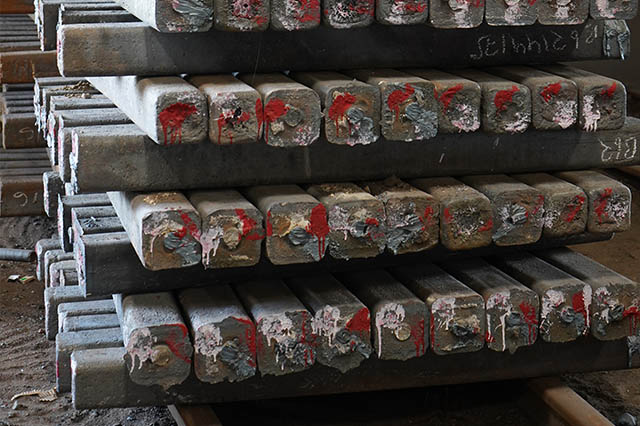
The molten steel is poured into the mold through ladle to form ingot. After the molten steel is smelted in the steelmaking furnace, it must be cast into ingots or billets of a certain shape before processing. The technological process of casting ingot with mould is called ingot for short.
After smelting, except for a few direct castings, most of the steel should be cast into ingots first, and then rolled into various steels, such as plates, bars, pipes, strips, flanges, etc. Heat treatment is required for the manufacture of tools and certain machine parts. Steel ingot is still the main raw material for steel rolling. The quality of steel ingot, the condition of ingot shape and its weight play an important role in steel rolling.
Ingot casting can be divided into upper casting method (Figure 2) and lower casting method (Figure 3). Generally, the internal structure of the upper ingot is better, the inclusions are less, and the operation cost is lower; the surface quality of the lower ingot is good, but the inclusions in the steel increase because of the middle injection pipe and the channel.
The size of ingot depends on many factors, such as the capacity of steelmaking furnace, the ability of blooming mill, the size of steel and the characteristics of steel grades. The ingots used to produce bars and profiles are generally square sections (called square ingots); the ingots used to produce plates are generally rectangular sections (called flat ingots); the ingots used to produce forging materials are square, circular and polygonal.
After the liquid steel enters into the ladle, it needs to be left for a period of time, so that the slag or other impurities mixed in the steel can be floated and removed during tapping, and the casting temperature can be adjusted at the same time.
Casting temperature shall be strictly controlled. If the casting temperature is too low, the surface of the ingot will solidify immediately after the liquid steel is put into the mold, which will cause the surface defects of the ingot, or even the liquid steel will start to solidify in the steel ladle, resulting in metal loss or scrap of the whole furnace of steel; if the casting temperature is too high, the formation time of the ingot surface will be delayed, resulting in hot cracks of the ingot. For killed steel, the casting temperature is generally controlled at 40-60 ℃ higher than the liquidus temperature of the steel. In order to ensure the uniform temperature of the whole ladle, argon can be blown into the ladle to stir the molten steel.
The down casting method generally requires proper casting speed to ensure the stable rise of molten steel in the mold and adjust the casting temperature. Slow injection is used when the casting temperature is too high and fast injection is used when the casting temperature is too low. The casting speed should be controlled to reduce splashing.
During casting, oxygen in the atmosphere will enter the ingot, which will cause the secondary oxidation of the molten steel and reduce the quality of the steel. When casting high quality steel, inert gas argon is needed to protect the steel flow contacting with air, and synthetic solid slag powder is used to protect the rising steel level in the mold.
The volume shrinkage caused by the solidification of the killed ingot body needs to be supplemented by the liquid steel in the cap, so the casting time of the cap can be appropriately prolonged. Generally, the injection speed of hat head is about twice as slow as that of spindle body.

© 2022 TK Steels. All Rights Reserved.